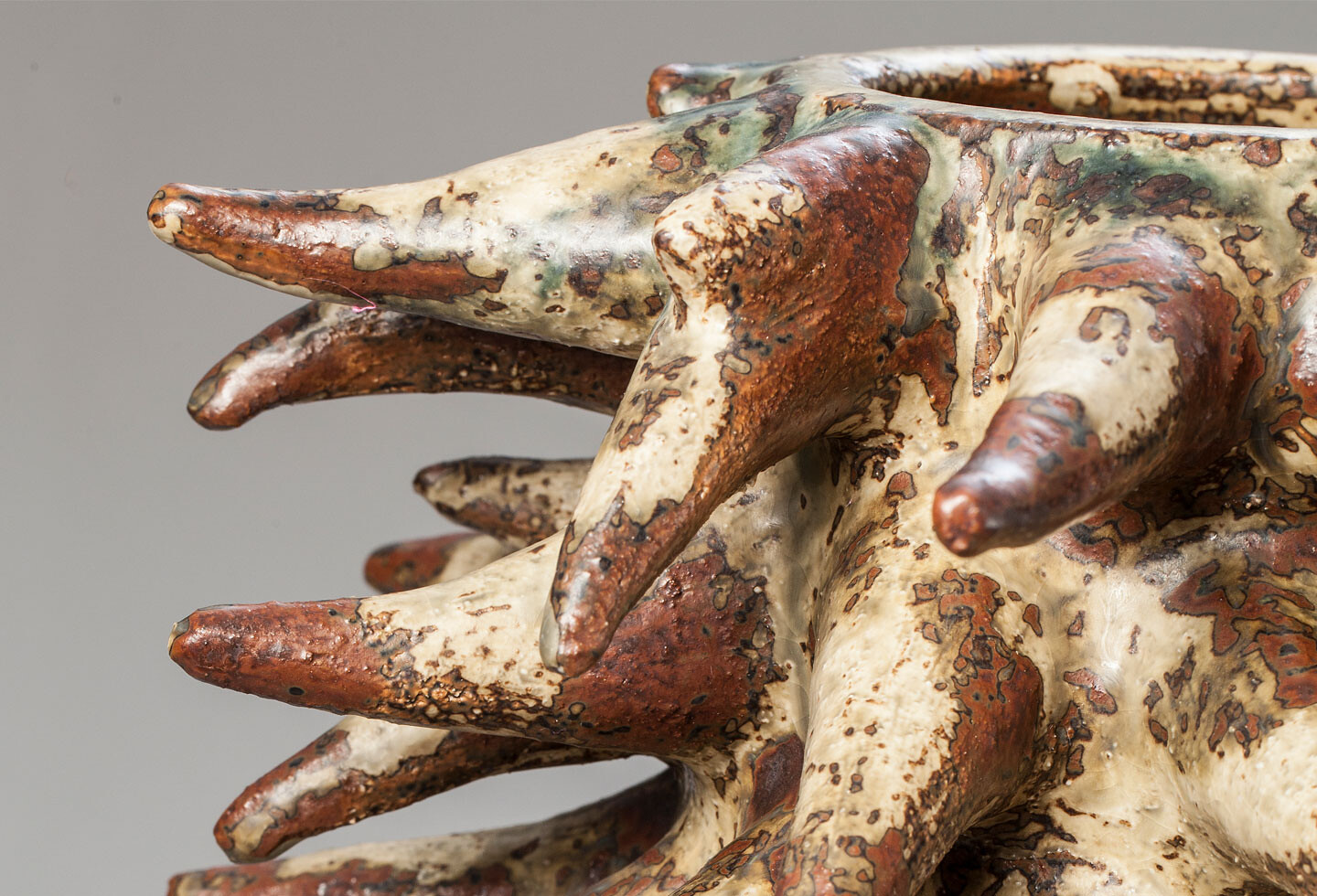Master of Stoneware
April 21–October 21, 2018
Skippergata 24B
NO 4611 Kristiansand
Norway
Hours: Tuesday–Sunday 11am–5pm,
Wednesday 11am–9pm
T +47 38 07 49 00
post@skmu.no
Axel Salto (1889–1961) is one of the 20th century’s greatest ceramic artists. He was Danish and initially studied painting at the Royal Danish Academy of Fine Arts. But it was not until he began working with stoneware that he gained recognition. His original and expressive visual idiom gives his works iconic status.
Salto’s ceramics are now featured in a solo exhibition at Sørlandets Kunstmuseum. The show includes some of his first attempts with stoneware in 1929 and extends to his most productive years at the Royal Copenhagen Porcelain Factory (1933–59). It also features a rich selection of Salto’s original drawings, books, illustrations and designs for textiles and paper.
Pioneering modernist and ceramicist
In Denmark, Salto is considered a pioneer in the Modernist movement. His innovative visual language is described as epoch-making. He rejected the Functionalist paradigm, which sought to simplify and create light and elegant forms, and dared instead to approach ceramic material in unconventional ways. The fluted, budding and sprouting styles are characteristic for his ceramic oeuvre, and they build on his observation of nature’s own forms, structures and movements.
Salto was fascinated by the qualities of glazes, how they reinforce form, and by the firing process’s unpredictability and effect on clay and glazes. Variations in the colour and lustre of glazes offered innumerable possibilities for playing with light and texture. The unpredictability of the kiln imbued his ceramics with a life of their own. Salto never considered himself a ceramist, he thought of himself as an artist. He worked closely together with professional experts, who took care of the craftmanship and the technical side of the production. They understood his artistic vision for ceramics, and helped him attain his artistic goals.
In 1917 Salto started publishing the journal, Klingen, using it to contribute to art criticism and the contemporary debate on art. Klingen became a mouthpiece for the avant-garde, for it functioned as a forum for new artistic ideas. Later, Salto also published books and articles where he discussed his artistic production in-depth. These texts offer unique insight into his artistic vision and thinking.
Danish Modern
In the decades after World War II, Salto joined a group of craft artists and furniture designers who successfully promoted Danish design internationally under the concept Danish Modern. International audiences encountered Salto’s works alongside works by designers such as Børge Mogensen (1914-72), Hans Wegner (1914-2007) and Poul Henningsen (1894-1967). In exhibitions such as Design in Scandinavia, which toured North America in 1954-57, Salto’s ceramics functioned as a bridge between design and art, and underscored the aesthetic dimension of the functional objects.
The Danish Modern movement established Denmark’s identity as a design nation. The movement also had an important sociocultural function of raising the cultural standard in post-war Denmark and expressing democratic values.
Perpetual deposit from AKO Kunststiftelse/Nicolai Tangen
The background for the exhibition at Sørlandets Kunstmuseum is the museum’s newly-established collaboration with the non-profit foundation AKO Kunststiftelse/Nicolai Tangen. Tangen’s large collection of Nordic Modernist art contains a considerable private collection of Salto’s ceramics. These works are now added to AKO Kunststiftelse and will be given to the museum in the form of a perpetual deposit. They will be an important supplement to the museum’s own collection of craft art, and in the exhibition, will be on public display for the first time.
Nordic network for craft art
Axel Salto: Master of Stoneware is produced through collaboration with CLAY Keramikmuseum in Middelfart, Denmark. In 2017, CLAY presented an exhibition of Salto’s ceramics, using its own collection as the starting point. Several works from CLAY’s collection will also be exhibited in Kristiansand. The collaboration with CLAY is the first stage of Sørlandets Kunstmuseum’s effort to establish a Nordic network for craft art. Since its founding in 1995, Sørlandets Kunstmuseum has focused on this field, and it will continue to do so in the coming years.

